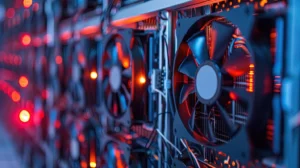By Aldo Santamaria | November 27, 2025
What Drives Data Centers’ Costs? The Hidden Forces Behind the Cloud
This is the third of a series of blogs on Data Centers. Catch up on the first two Inside the Numbers: Project Finance for Data Centers and The Shape-Shifting Nature of Data Centers: Real Estate or Infrastructure?
Better chips don’t automatically mean cheaper facilities — and that’s where the real story begins
In the first two posts of our data centers series, we looked at how these facilities are financed and why they sit somewhere between real estate and infrastructure. We also highlighted their central role in powering Artificial Intelligence (AI) and cloud services. But that technological wave comes with a cost structure of its own.
Here’s the surprising part: from a financial modeling standpoint, the biggest factors aren’t the servers or the land. It’s the electricity required to run them — and the cooling systems that prevent overheating. These two forces dominate day-to-day operating costs and shape long-term investment returns.
So, let’s break down the real engine behind data centers: power, cooling, and the cost structure beneath our digital world.
Power: The Largest Operating Cost for Data Centers
Running a large-scale data center can demand as much electrical power as a small city. Consider a facility with 10,000 racks, each drawing 10kW. That’s 100 MW of power — enough to supply tens of thousands of homes. No surprise, then, that power is often the single biggest operating cost, sometimes making up more than half.
And it’s not just streaming or social media on the line. Data centers support banks, hospitals, logistics networks — essential services that can’t afford an outage. That’s why operators invest heavily in redundancy: if the grid fails, massive batteries or diesel generators kick in. But because those backup systems don’t activate instantly, an Uninterruptible Power Supply (UPS) fills the gap to ensure seamless operation.
Artificial Intelligence only amplifies this trend. Each AI query on platforms like ChatGPT, Gemini or Perplexity requires roughly ten times the processing power of a standard Google search. Hardware manufacturers are racing to improve efficiency, but the demand curve keeps rising.
Efficiency Doesn’t Always Reduce Demand: Enter Jevons Paradox
At first glance, you may think that as servers and chips become more efficient, data centers should naturally use less power. But history shows it often works the other way around — a dynamic known as the Jevons Paradox.
First described in the 1800s, the idea is simple: when something becomes cheaper or easier to use, people tend to use it a lot more. We’ve seen this with lighting, transportation, and electricity itself. As technologies become more efficient, total consumption didn’t fall — it exploded, because new uses suddenly became practical.

As processing units and cooling systems become more advanced, overall power demand continues to rise — an example of the Jevons Paradox.
The same pattern may emerge in AI. As chips get faster and less resource-hungry, they unlock whole categories of tasks that weren’t feasible before. That can push overall power demand up, even if each chip is doing more work per watt.
This doesn’t mean demand will rise forever. But it does illustrate a critical point: power availability becomes more than a cost line — it can become a strategic bottleneck for operators and investors.
Cooling: The Hidden Giant for Data Centers
Electricity isn’t just expensive — it has physical consequences. All that power turns into heat, which makes keeping servers within safe temperature ranges is a major engineering and cost challenge.
Cooling can rely on air-based systems like fans, chillers and vents, or on liquid cooling that uses thousands (sometimes millions) of gallons of water per day. Some facilities use closed-loop systems to reuse water, but in most cases, cooling remains primarily an energy-driven cost.
How These Costs Affect Data Center Financial Modeling
So why does all this matter for financial modeling?
Many assume that fluctuating energy prices are a major risk for data centers. But the cost structure is like other infrastructure assets, like hospitals or airports, where operators simply pass energy costs through to customers with a small markup.
Labor is another key component: skilled technicians for daily operations, plus maintenance teams for mechanical systems and emergency repairs. Add insurance, property taxes, fiber connectivity, and specialized mechanical equipment, and you get a substantial cost base — but again, mostly passed on to tenants.
Data centers store and process vast amounts of information, ensuring it’s available around the clock for critical applications.If you want to master project finance modeling, Pivotal180 offers hands-on courses covering infrastructure, renewable energy, and related industries. Whether you’re a student building job-ready skills or a professional sharpening your expertise, you’ll learn how to build full financial models from scratch and understand how scenario changes ripple through real-world projects.
Our courses break down the essential project finance concepts through hands-on, practical examples, so you don’t just learn— you do. Choose from self-paced online programs, live instructor-led sessions, or tailored corporate training designed to fit your organization’s needs.
Keep a eye out for our new course on Data Centers launching in December
Enroll in a Pivotal180 course! We offer a range of training programs for modelers of different backgrounds and experience levels:
Renewable Energy Project Finance Modeling
Introduction to Project Finance Modeling
Financial Modeling Fundamentals
Tax Equity & Hybrid Financial Modeling
Have questions? Reach out anytime at [email protected] and start your journey toward mastering project finance financial modeling.
